Definition: H(h)umanities

Isn’t it crazy how capitalizing one single letter in a word can change the entire meaning? This is the case with upper-case Humanities and lower-case humanities.
While studying humanities in the Humanities course, I have discovered that the words overlap in meaning but also focus on separate spheres of thought. To me, Humanities is a discipline, a way to study the humanities. Lower-case humanities explores human interaction and interconnectedness. Because humans are connected by the mere fact that we are biologically similar animals, we have the ability to empathize with others across the globe. A simple occurring at any point on the globe can affect someone somewhere else. Every action an individual makes impacts the collective humanity and contributes to the humanities data used while learning about the Humanities. Through exploration and analysis of texts and art, a person can learn about the past, present, and future of all humanity along with different pockets of humanity.
By studying the Humanities this semester through a series of units and topics, I have learned to recognize similarities among seemingly separate cultures and appreciate the human differences and uniqueness that bond every individual. In unit 1 we discussed how the artifacts we have access to determine our collective understanding of history; however, there is no way to find every primary and secondary source ever made so obvious gaps in our interpretation and understanding of history exist. In Professor Quillen’s opening plenary lecture on August 27th, she highlighted the ability of an individual to create his/her own reality based on the questions asked and the stories created from the answers. Since we can only access so many Humanities documents in our lifetime, what we choose to read and learn determines our understanding of humanities. In unit 2 we explored the intricacies of language and translations by watching the movie Arrival and listening to a panel lecture on translations. Language is one of the most widely used forms of communication and, as such, determines our reality. Because background knowledge and lived experiences influence our comprehension of language and ability to translate across cultures, the same words can mean different things in separate languages influencing our understanding of subsets of humanity. Our extensive discussions around citizenship and the possession of a body in unit 3 had us question our definition of citizenship and why governments feel the need to claim citizens rather than accept all humans. The emphasis on every person being a part of the humanities negates the point of citizenship. In fact, it would make more sense to have global citizenship as our human connection through bodies negates the divide created by historical power structures. The religious texts studied in unit 4 revealed how religion established whiteness as the basis and comparison for the ideal and superior race in humanities, thus the Humanities discipline often focuses on white societies. Since the white definition of property became dominant, laws were made around this assumption and white privilege became the status quo. Professor Wills emphasized the inconsistency of the law and its tendency to act in a race and gender patriarchy during her November 21st plenary lecture. This biased interpretation of the law creates an imbalance in racial relations and ignores an entire section of humanity. When society realizes the contradictions in how we treat other members of humanity through studying Humanities, people will be able to mold their outlooks and actions in an attempt at positively advancing the humanities as a whole.
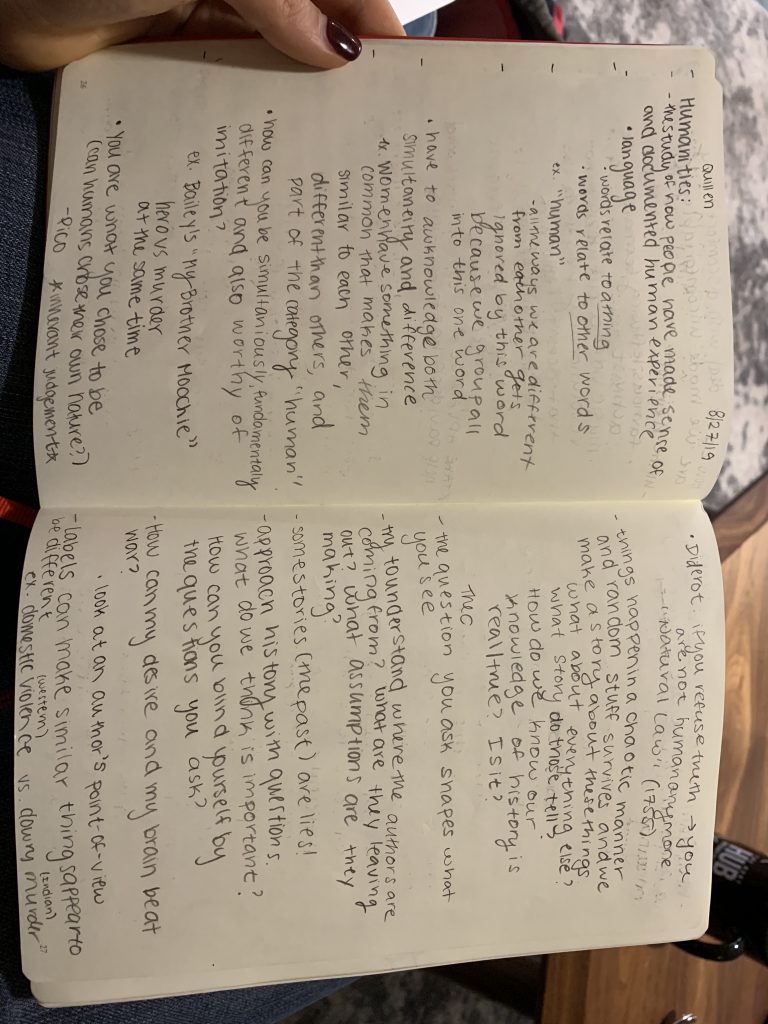
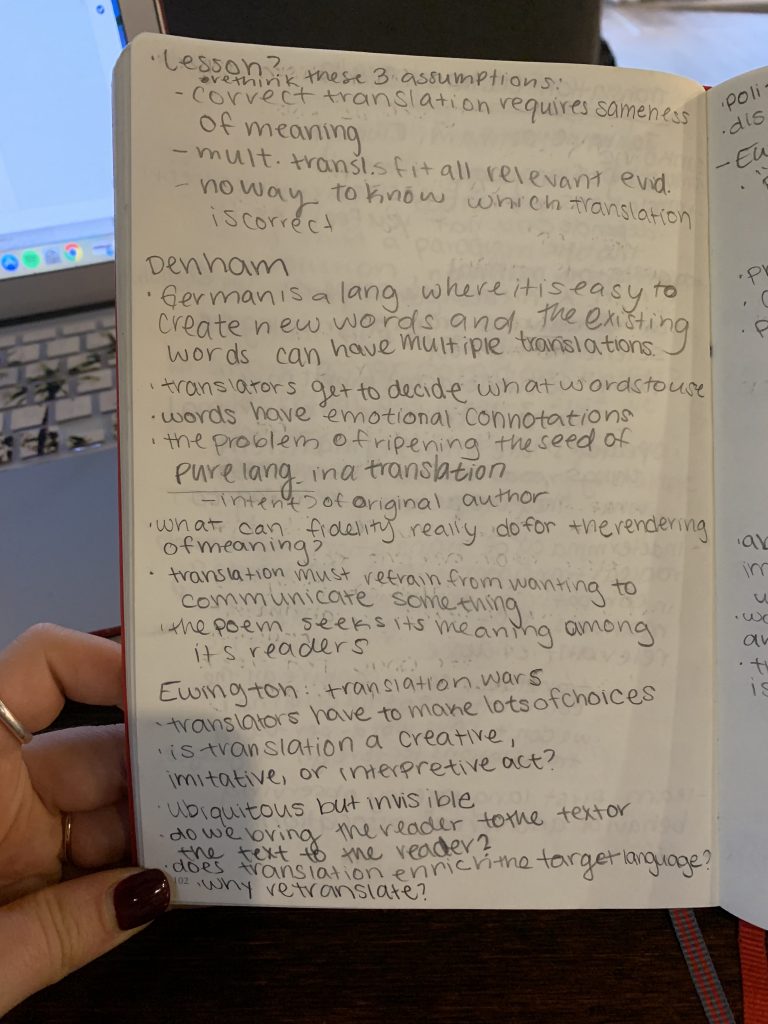
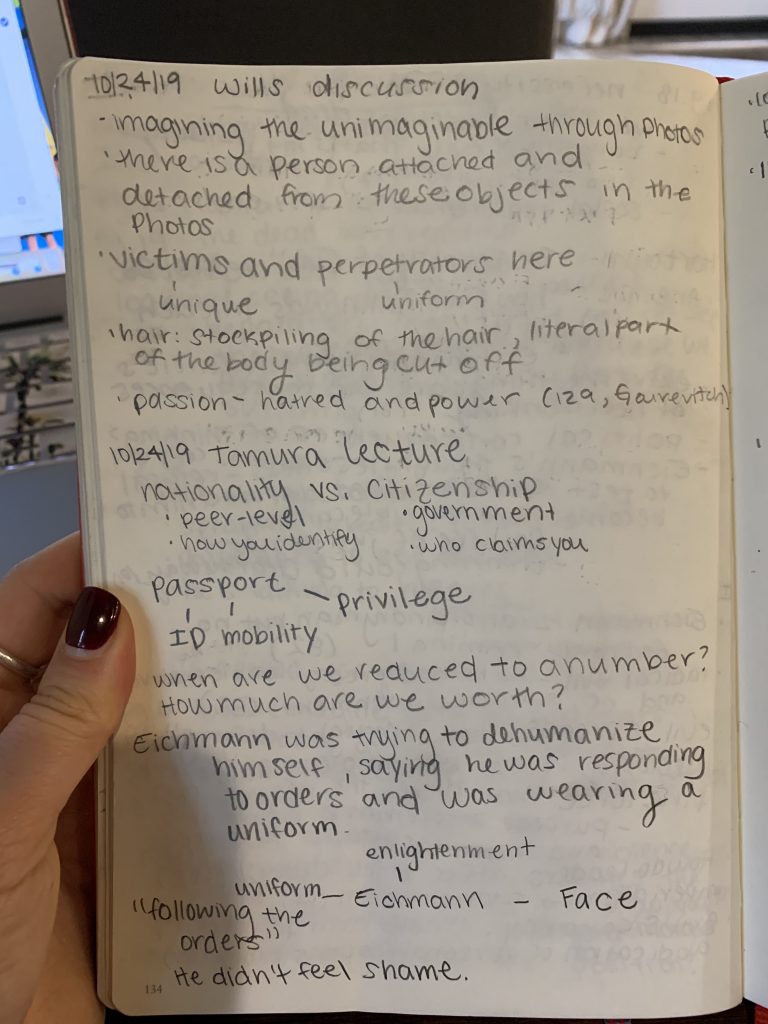

Definition: Revolution

Before becoming a Humanities student, I thought I had a comprehensive understanding of revolutions. Based on my historical knowledge of significant revolutions like the French and American Revolutions, I interpreted them as grandiose and impactful political change. While this belief is a truthful aspect of revolution, it ignores the several other parts that encompass the entirety of a revolution. Even though some revolutions are large-scale and political, most are not. Additionally, a revolution can be monumental for the people participating in one, but it can also be a compilation of smaller events creating new meaning for the partakers. Whether a revolution occurs to a single person or to the entire global population, it still has a major impact on the revolutionaries. In this post, we will explore how I underwent my internal revolution in this course.
In Unit 2, we dissected the meaning of revolution from a scientific lens. By reading Principe’s Scientific Revolutions book, we defined two important aspects of a revolution: conceptual schema and paradigm shift. To help categorize information, an individual organizes observations into a conceptual schema that molds our outlook of the world. Each conceptual schema then influences the formation of a paradigm. In a group discussion, we agreed that a paradigm is a group of accepted facts that govern how society acts. Because there is a wealth of information and data available, multiple paradigms can form and people can choose under which paradigm to exist. When a paradigm shifts because of enough credible sources proving a differing conclusion, a revolution has occurred. Through Plato’s “Allegory of the Cave” I know every individual is living in a previously agreed upon reality that could change at any moment by a new discovery. While existing in a preconceived truth is scary, it also indicates that there are countless possibilities for individual revolutions in a person’s lifetime. When reviewing notes from Unit 1, the concept of a revolution was more intra-personal than extra-personal. Locke emphasized your body as your possession and holds the key to your power. This power can be used to create new ideas, influence others, and even spark a revolution.
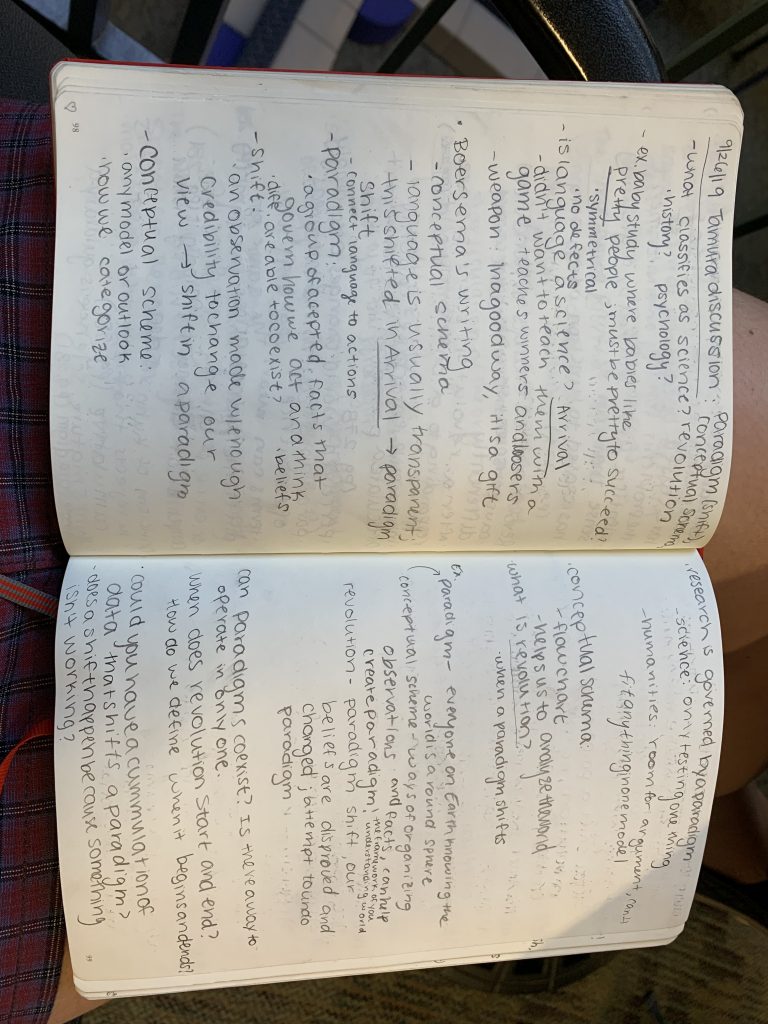
Through discussing the texts in Unit 4, I was struck by the concept of violence as necessary to create revolutionary change. Protests like those discussed in March 2 were passive until protesters grew impatient. The real change occurred once people were willing to make life-threatening sacrifices. One uniting factor between all humans is a fear of death. When someone is willing to surrender his/her life and freedom for a revolutionary idea, this person has already achieved an individual revolution of thought while trying to influence others to believe the same thing. Since we all have bodies, and bodily connection as emphasized by Stevenson in Unit 1 is important to understanding other humans, learning to value each other despite differences and value ourselves is a revolutionary thought. During a movement lesson by Professor Kaliski in Unit 3, we explored how to use our bodies to create change. Our bodies can generate meaning out of simple actions, which can then influence our ideas in revolutionary ways.

When reading Lapham’s Revolutions, several images sparked curiosity about how each individual can create revolution. One picture depicted an undressed body deciding on which outfit to wear. Each clothing item represents a significant idea, so every item has the potential to incite a revolution (41). Our clothing has such a weighty effect on other people. Certain social situations expect a specific type of dress, even if that dress code is restricting individuality and expression. Acknowledging someone’s worth beneath the clothing is the same as recognizing a person’s merit despite differences in race and body type. The acceptance and legalization of birth control is another revolution centered around appreciating a person’s worth and ownership of his/her body (203). Although the contraceptive revolution affects multiple women, it began with each woman’s individual desire for jurisdiction over her own body.
Lapham, Lewis H. American Agora Foundation. 2nd ed. Vol. 7. New York, NY: David Rose, 2014.

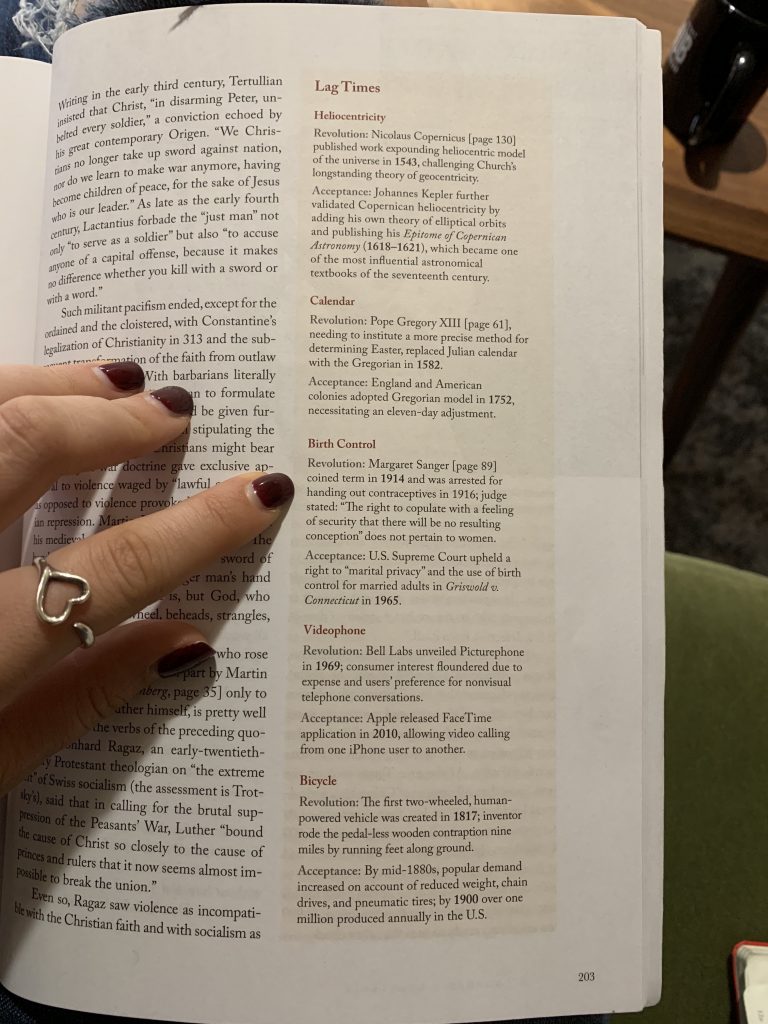
Whether a revolution happens to millions of people or to a single person, a revolution causes significant change, usually for the better. Revolutions can happen in an instant or over multiple years. Significant parts of a revolution include a beginning and end, a clear difference in thought and action before and after the event, and an obvious change in the way one conducts his/her life after the revolution. When meeting new people from different backgrounds who introduce new ideas and thought-processes, a person’s conceptual schema could change inciting an internal revolution. If these are happening every day about the same topic, then a larger revolution will occur. Once everyone learns to value other people as equal humans despite differences in appearance and/or culture, further progress can occur. Loving yourself and loving others is the greatest revolution, especially because a person must be self-confident in order to inspire advancement. Noticing our individual merit and worth as people connected by humanity will allow for a cultural and societal revolution.


